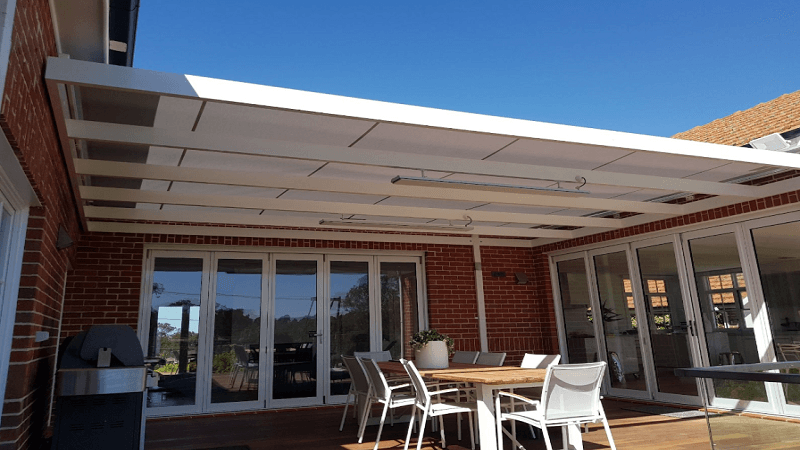Outdoor living is part of the Australian lifestyle, but it comes with challenges. Harsh sun, glare, and unpredictable showers can make patios and decks uncomfortable. A retractable awning solves these problems without the bulk of a fixed structure. It gives you shade when you need it and folds away when you’d rather enjoy the sky.
Where would you use a retractable awning?
Retractable awnings can be fitted in a wide range of spots. Patios, decks, balconies, and poolside areas are the most common.
If you like entertaining, an awning can keep your table or lounge area covered so you don’t have to stop when the sun is harsh or a light shower rolls in.
They’re also handy for homes with limited space. Because the awning tucks away neatly, you won’t lose natural light inside once it’s retracted. This makes them ideal for smaller yards or apartments where a permanent roof isn’t an option. The YourHome guide by the Australian Government explains how external shading like this can improve comfort and reduce heat inside your home.
What does it do for you?
The biggest draw is flexibility.
On a hot day, you can extend the awning to block out glare and heat. At night, you can roll it back to open up the view and enjoy the cooler air.
It also gives extra protection. By cutting direct UV rays, retractable awnings reduce fading on outdoor furniture, timber decks, and even indoor flooring near large windows. That protection can save you from costly replacements.
And then there’s comfort. Shaded outdoor areas are easier to use, so you’ll naturally spend more time outside.
For a deeper look, this guide on the retractable awning explains styles, operation, and what to consider when choosing one.
How does it operate?
Retractable awnings come in two main options:
- Manual: Opened and closed with a crank handle. Simple and budget-friendly.
- Motorised: Operated by remote or switch. Some can even connect with your smart home so you can control them from your phone.
Motorised awnings are often chosen for larger areas, with many models including wind or sun sensors that move the awning automatically for extra safety.
How much does it cost?
The price depends on the size, fabric, and whether you go manual or motorised. Smaller manual designs start from a few thousand dollars. Larger motorised systems with sensors will cost more.
While the upfront spend may be higher than a fixed cover, it pays off in the long run. You’ll protect your furniture, use your outdoor space more often, and add appeal to your property.
The Cancer Council also points out that investing in quality shade makes a difference in reducing UV exposure.
Can it handle wind and rain?
Retractable awnings are designed for everyday conditions. Fabrics are water-resistant, so light rain isn’t a problem. They also offer strong UV protection, which is often more important in the Australian climate.
They’re not built for heavy rain or high winds, so leaving them open in those conditions can cause damage. Motorised versions with wind sensors help avoid this by pulling the awning back automatically.
Types of retractable awnings
Retractable awnings come in a few different styles, each suited to certain spaces and needs.
- Folding arm awnings: A common choice for patios and decks. They extend out to provide shade over open areas without posts in the way, then fold back neatly against the wall when you’re done.
- Retractable roof awnings: Options like Sundream and Sintesi work well for bigger areas. They create a roof-like cover, making outdoor dining or entertaining spaces usable through more of the year.
- Window awnings: These sit directly over windows, cutting down heat and glare indoors while protecting your furniture from fading. They’re especially useful for homes that face strong afternoon sun.
- Outdoor blinds: Good for enclosing outdoor spaces like patios. They reduce wind, glare, and light rain, and with clear fabrics you can still keep your view.
Many homeowners choose a mix of these, depending on how their outdoor space is set up.
Making the right choice
When picking an awning, think about how you’ll use it. Is your main need for afternoon shade? Do you want motorised control? Is your area exposed to wind?
These questions will help narrow your options. Adding a retractable awning is a simple change that can improve the way you use your home, making outdoor spaces more practical and enjoyable year-round.

